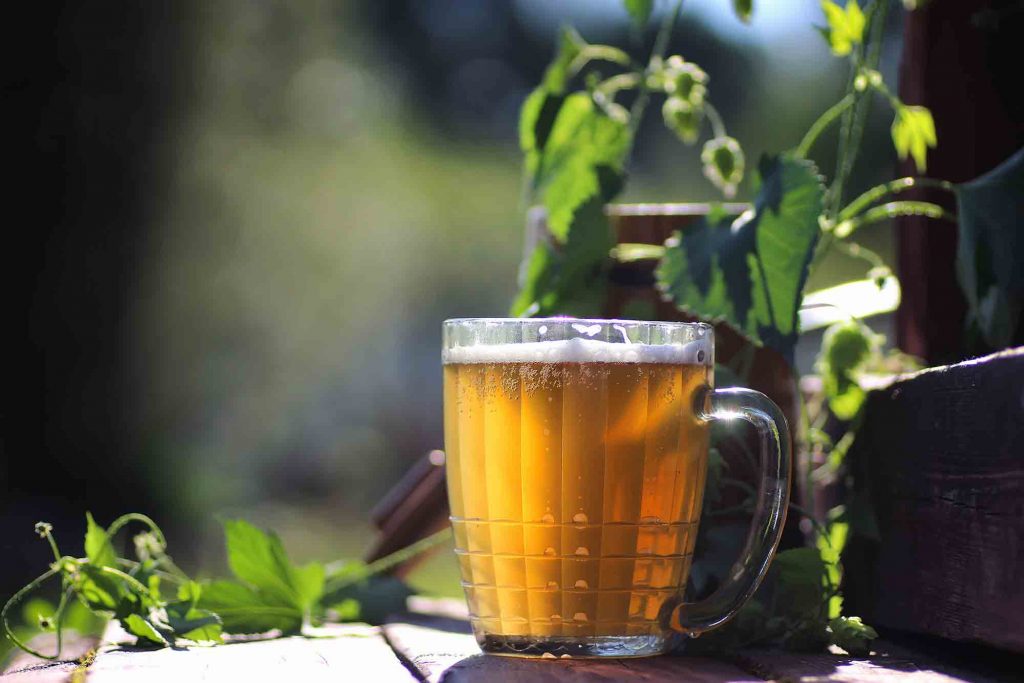 Brew day is fun, but it’s not something to take lightly at all. Carefully chosen ingredients – measured precisely – are cooked and combined to create a special sort of alchemy. Without a doubt, home brewing requires excellent timing, preparation, and focus.
Brew day is fun, but it’s not something to take lightly at all. Carefully chosen ingredients – measured precisely – are cooked and combined to create a special sort of alchemy. Without a doubt, home brewing requires excellent timing, preparation, and focus.
But in the midst of hop pellets, yeast, and spent grain, pets can find themselves in a lot of trouble. Additionally, alcohol toxicity in pets is a significant risk of home brewing. To prevent emergencies connected to home brewing, we offer the following tips.
Hops
Many home brewers cultivate and harvest their own hops. Not only does this offer more control over the bitter characteristics in craft beer recipes, homegrown hops create a beautiful, lush canopy over a pergola or fence. However, if a pet has unrestricted access to the area where hops are growing and dropping their cones, they could face the following repercussions from the resin and essential oils:
- Rapid rise in internal temperature
- Excessive panting
- Lethargy
- Abdominal pain
- Increased heart rate
Symptoms vary, but typically appear between 30 minutes to 12 hours after ingestion of hops. Seizures, brain damage, and death can occur if not treated immediately. The best way to prevent this emergency? Do not allow your pet to access hops. Securely store dried hops and/or the commercial pellet varieties.
Wort Production
To make malt, dried, sprouted barley is milled, mashed, and steeped in hot water. The sugar is then extracted from the liquid wort. Malt extract can also easily be added to water to save steps in homebrewing. To sanitize the wort, the mixture is boiled, hops are added, and the tier gets a good workout for the next few hours. Once cooled, yeast is added to yield fermentation.
The Trouble with Yeast
Pets can get in trouble at any step during the way (boiling water, for starters), but if yeast is consumed, pets may vomit, experience diarrhea, have trouble breathing, and have decreased coordination. Coma and death are also severe, but not rare, outcomes of homebrewing with pets.
Spent Grain
You may have seen spent grain dog treats. Most dogs love them, especially since they’re usually combined with peanut butter.
Breweries give this stuff away by the bucket load (for composting, mushroom growing, and stock feed, among other reasons), but what’s in it? After the sugar, proteins, and other nutrients have been extracted from the mash (which can be wheat, corn, rye, and even rice), the leftover malt from the mash (and other nutrients) comprise the spent grain component.
Most pet hops poisoning are the result of eating the spent grain mixture. If you compost yours, please ensure that your pet cannot get into it.
Grain whiskeys are created with similar ingredients; please proceed with caution when distilling at home.
Alcohol Toxicity in Pets
Alcohol contains ethanol. Depending on the pet and the amount ingested, alcohol toxicity in pets can be fatal. Confusion, weakness, hyperactivity, panting, and vomiting are obvious signs. Please do not delay: Seek emergency care ASAP.
Always Here
If you have additional questions about homebrewing or alcohol toxicity in pets, your West Park Animal Hospital team is always here for you. Cheers!
The post The Home-Brewer’s Guide: Alcohol Toxicity in Pets and Other Hazards appeared first on West Park Animal Hospital Blog.

